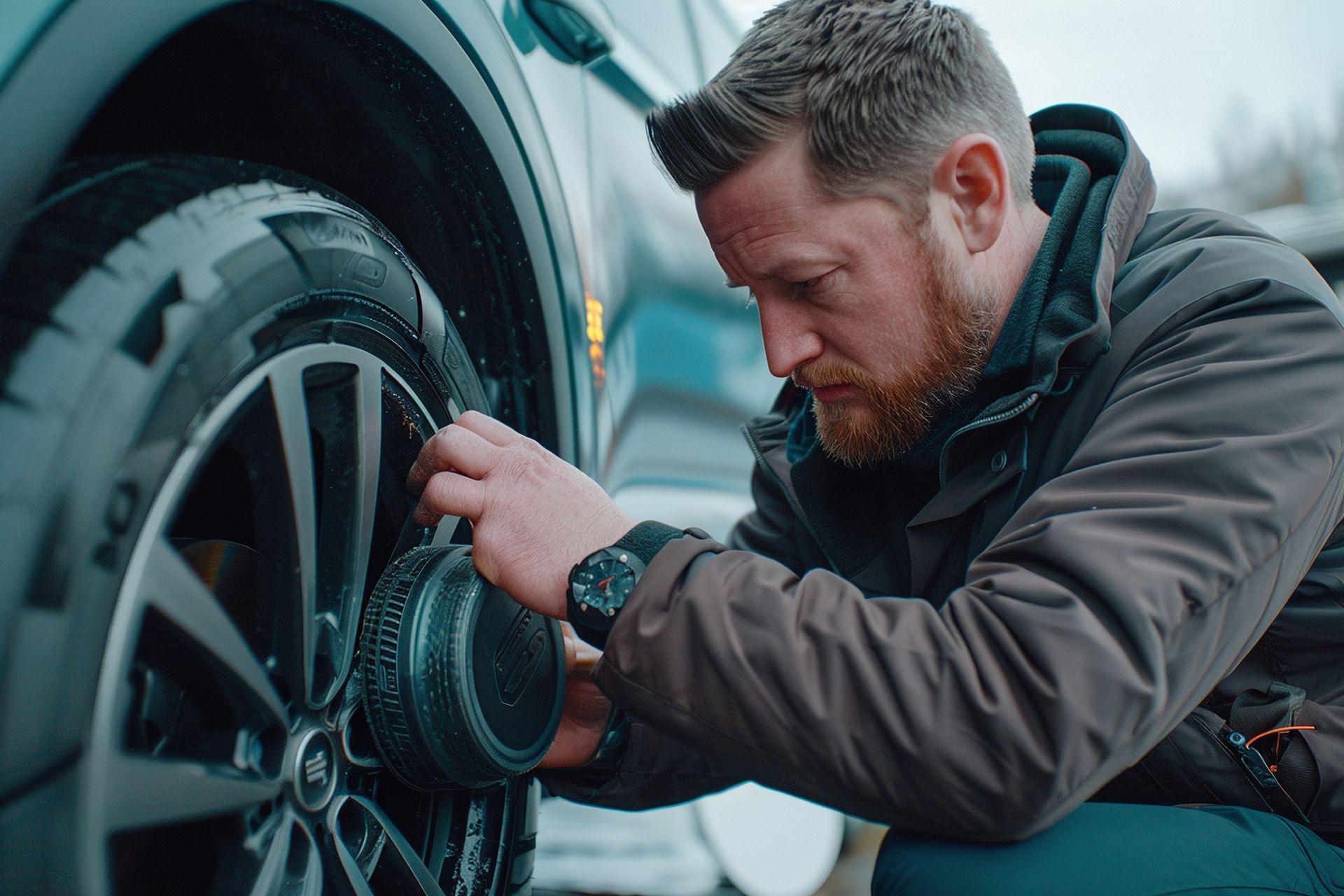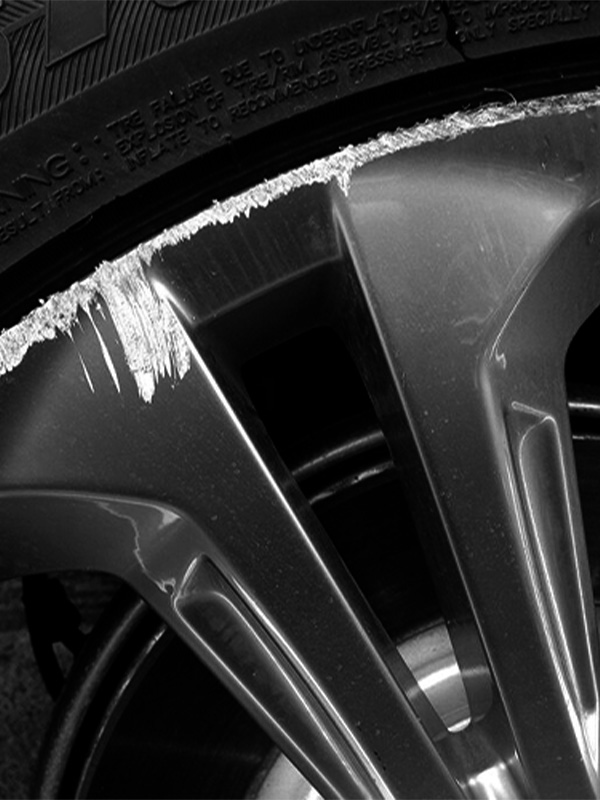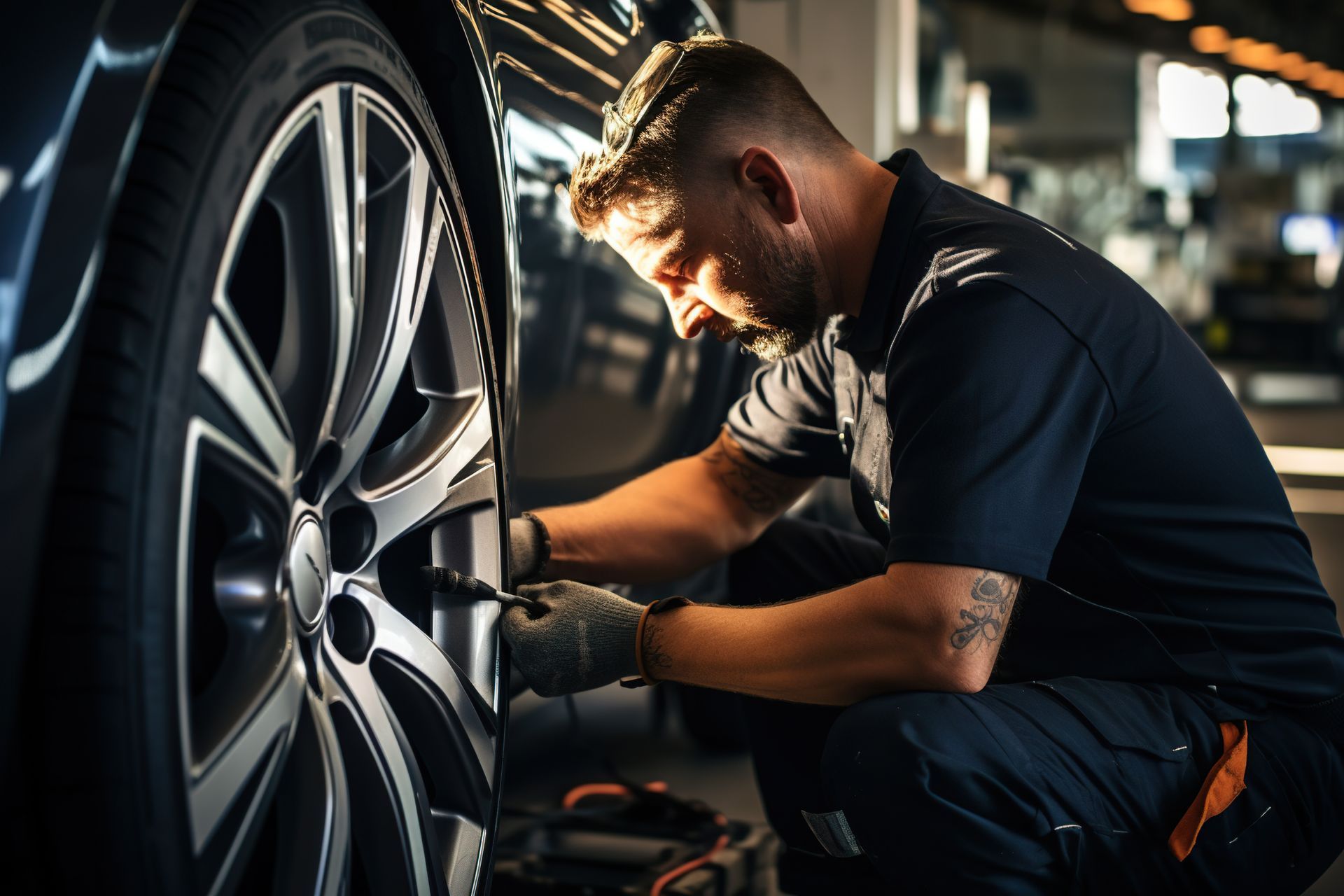804-480-4863
The Complete Guide to Professional Rim Repair: Fixing Bends, Cracks, and Curb Rash
The Complete Guide to Professional Rim Repair: Fixing Bends, Cracks, and Curb Rash

Your wheels take a beating every day, from potholes and curbs to road debris and unexpected obstacles. Over time, damage such as bent rims, cracks, and curb rash can compromise the look and functionality of your wheels. Professional rim repair services can restore your wheels to their original condition, enhancing both aesthetics and safety. Here’s everything you need to know about professional rim repair and why it’s essential for maintaining your vehicle.
Why Rim Repair is Important
Damaged rims are more than just a cosmetic issue—they can lead to serious driving hazards, including:
- Vibration and Steering Issues: A bent or cracked rim can cause vibrations in the steering wheel, leading to reduced handling and comfort.
- Air Leaks and Flat Tires: Cracks or severe bends can prevent the tire from sealing properly, resulting in slow leaks or blowouts.
- Uneven Tire Wear: A damaged rim can put unnecessary stress on your tires, causing premature wear and tear.
- Reduced Fuel Efficiency: When your wheels aren’t rolling smoothly, your vehicle has to work harder, leading to lower gas mileage.
Common Types of Rim Damage
- Bent Rims
- Usually caused by hitting potholes, curbs, or road debris.
- Leads to wobbling, steering issues, and vibrations at high speeds.
- Professional repair involves reshaping the rim using hydraulic presses or heat application to restore its original form.
- Cracked Rims
- Cracks can occur from severe impacts or prolonged stress on the wheel.
- Small cracks can be welded and reinforced, but extensive cracks may require a full rim replacement.
- Driving with a cracked rim is extremely dangerous as it can lead to sudden tire failure.
- Curb Rash
- Scrapes and gouges along the rim edges caused by rubbing against curbs.
- Affects the aesthetics of your wheels but can also weaken the structural integrity over time.
- Repair involves sanding, filling, and refinishing the damaged area to restore the wheel’s original appearance.
The Professional Rim Repair Process
When you take your wheels to a professional repair shop, they follow a meticulous process to ensure safety and durability:
- Inspection and Assessment
- The technician examines the rim for bends, cracks, and cosmetic damage.
- They determine whether the wheel can be safely repaired or if replacement is necessary.
- Straightening and Reshaping (For Bent Rims)
- High-tech machinery applies controlled heat and pressure to reshape the wheel back to factory specifications.
- Crack Repair and Welding
- Small cracks are carefully welded and reinforced to ensure strength and longevity.
- The repaired area is polished and blended for a seamless finish.
- Curb Rash Refinishing
- The damaged surface is sanded, filled, and repainted to match the original wheel finish.
- Some services offer powder coating for extra durability and a factory-fresh look.
- Balancing and Final Inspection
- After the repair, the wheel is balanced to prevent vibrations.
- A final quality check ensures the wheel meets safety standards before installation.
How to Prevent Rim Damage
While professional repair can restore your wheels, prevention is always the best strategy:
- Avoid Potholes and Rough Roads: Drive cautiously on damaged roads and maintain proper tire pressure.
- Be Careful When Parking: Use extra caution when parallel parking to prevent curb rash.
- Regular Wheel Inspections: Check your rims periodically for damage, especially after hitting a pothole.
- Invest in Quality Tires: Higher-quality tires can absorb more impact, reducing the risk of rim damage.
Conclusion
Rim damage is a common issue that affects both the performance and appearance of your wheels. Whether it’s a bend, crack, or curb rash, professional rim repair can restore your wheels to their original state, ensuring a smooth, safe, and stylish ride. If your wheels are showing signs of damage, don’t wait—schedule a professional rim repair today to keep your vehicle in top shape.
Need expert rim repair? Contact Richmondwheelrepair.com for a consultation and get back on the road with confidence!


